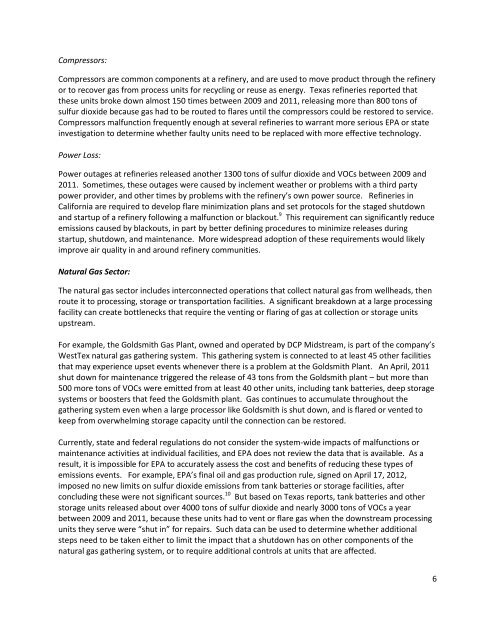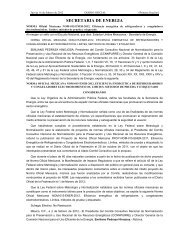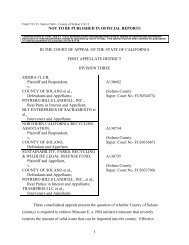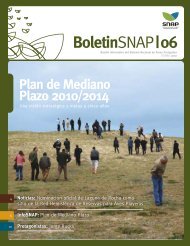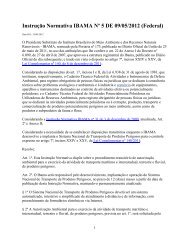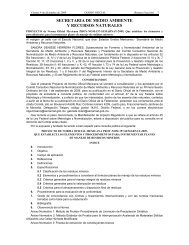accident prone - Environmental Integrity Project
accident prone - Environmental Integrity Project
accident prone - Environmental Integrity Project
Create successful ePaper yourself
Turn your PDF publications into a flip-book with our unique Google optimized e-Paper software.
Compressors:<br />
Compressors are common components at a refinery, and are used to move product through the refinery<br />
or to recover gas from process units for recycling or reuse as energy. Texas refineries reported that<br />
these units broke down almost 150 times between 2009 and 2011, releasing more than 800 tons of<br />
sulfur dioxide because gas had to be routed to flares until the compressors could be restored to service.<br />
Compressors malfunction frequently enough at several refineries to warrant more serious EPA or state<br />
investigation to determine whether faulty units need to be replaced with more effective technology.<br />
Power Loss:<br />
Power outages at refineries released another 1300 tons of sulfur dioxide and VOCs between 2009 and<br />
2011. Sometimes, these outages were caused by inclement weather or problems with a third party<br />
power provider, and other times by problems with the refinery’s own power source. Refineries in<br />
California are required to develop flare minimization plans and set protocols for the staged shutdown<br />
and startup of a refinery following a malfunction or blackout. 9 This requirement can significantly reduce<br />
emissions caused by blackouts, in part by better defining procedures to minimize releases during<br />
startup, shutdown, and maintenance. More widespread adoption of these requirements would likely<br />
improve air quality in and around refinery communities.<br />
Natural Gas Sector:<br />
The natural gas sector includes interconnected operations that collect natural gas from wellheads, then<br />
route it to processing, storage or transportation facilities. A significant breakdown at a large processing<br />
facility can create bottlenecks that require the venting or flaring of gas at collection or storage units<br />
upstream.<br />
For example, the Goldsmith Gas Plant, owned and operated by DCP Midstream, is part of the company’s<br />
WestTex natural gas gathering system. This gathering system is connected to at least 45 other facilities<br />
that may experience upset events whenever there is a problem at the Goldsmith Plant. An April, 2011<br />
shut down for maintenance triggered the release of 43 tons from the Goldsmith plant – but more than<br />
500 more tons of VOCs were emitted from at least 40 other units, including tank batteries, deep storage<br />
systems or boosters that feed the Goldsmith plant. Gas continues to accumulate throughout the<br />
gathering system even when a large processor like Goldsmith is shut down, and is flared or vented to<br />
keep from overwhelming storage capacity until the connection can be restored.<br />
Currently, state and federal regulations do not consider the system-wide impacts of malfunctions or<br />
maintenance activities at individual facilities, and EPA does not review the data that is available. As a<br />
result, it is impossible for EPA to accurately assess the cost and benefits of reducing these types of<br />
emissions events. For example, EPA’s final oil and gas production rule, signed on April 17, 2012,<br />
imposed no new limits on sulfur dioxide emissions from tank batteries or storage facilities, after<br />
concluding these were not significant sources. 10 But based on Texas reports, tank batteries and other<br />
storage units released about over 4000 tons of sulfur dioxide and nearly 3000 tons of VOCs a year<br />
between 2009 and 2011, because these units had to vent or flare gas when the downstream processing<br />
units they serve were “shut in” for repairs. Such data can be used to determine whether additional<br />
steps need to be taken either to limit the impact that a shutdown has on other components of the<br />
natural gas gathering system, or to require additional controls at units that are affected.<br />
6


